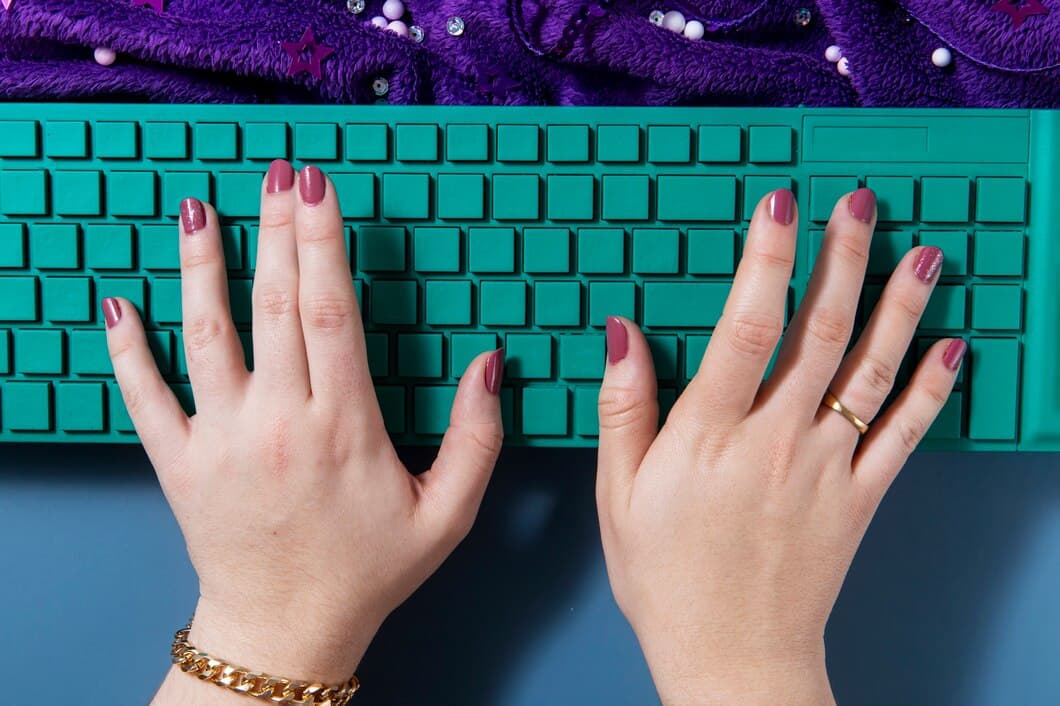How To Troubleshoot A Keyboard That Is Not Responding On A Laptop?

A laptop keyboard is an essential part of the computer. Without it, many basic functions of the laptop would be difficult or impossible to perform. If your laptop keyboard has stopped working, there are a few things you can try to troubleshoot the problem. First, check to make sure the keyboard is properly connected to the laptop. If the keyboard is connected but not responding, try restarting your laptop. If the keyboard still doesn't work, you may need to update the keyboard drivers. To do this, go to the manufacturer's website and download the latest drivers for your laptop model.
If you have tried all of the above steps and your keyboard still isn't working, you may need to replace the keyboard. To do this, you will need to purchase a new keyboard and follow the manufacturer's instructions for installing it.
1. Check the physical connection
Sometimes, the keyboard may not be responding due to a loose or faulty connection. To fix this, unplug the keyboard from the laptop and reinsert it. Make sure that the connection is secure and that the keyboard is properly seated in the port.
If the keyboard still doesn't respond, try using a different USB port on the laptop. If the keyboard works in another port, then the problem is likely with the original port.
If you've tried all of the above steps and the keyboard still isn't responding, then it's possible that the keyboard itself is faulty. In this case, you may need to replace the keyboard.
2. Restart your laptop
Another way to reset a laptop keyboard is by rebooting it. Restarting your laptop can fix a frozen keyboard and get it working again. If the keyboard is still not responding after you restart your laptop, you may need to try other troubleshooting methods.
To restart your laptop, you can click on the "Start" button and select "Restart" from the menu. You can also press the "Windows" key + "R" to open the "Run" dialog box and type "shutdown /r" into the box. Press "Enter" to restart your laptop.
Restarting your laptop is one of the best ways to reset a stuck keyboard. It can also help to fix other software problems that may be causing your keyboard to not work properly.
If you have tried all of these methods and your keyboard still does not work, you may need to take your laptop to a repair shop. They can diagnose the problem and fix it for you.
3. Update your keyboard drivers
If your keyboard still isn't responding, you can try updating your keyboard drivers. To do this, open the Device Manager by pressing Windows Key + X and selecting Device Manager. Then, expand the Keyboards section and right-click on your keyboard. Select Update driver and follow the on-screen instructions.
If you're still having problems with your keyboard, you can try uninstalling and then reinstalling it. To do this, right-click on your keyboard in the Device Manager and select Uninstall. Then, restart your computer and Windows will automatically reinstall the keyboard driver.
If you've tried all of these steps and your keyboard is still not working, there may be a problem with the hardware. In this case, you may need to contact the manufacturer of your laptop for further assistance.
4. Run the Keyboard Troubleshooter

If the above troubleshooting steps do not resolve the issue, you can try running the Keyboard Troubleshooter built into Windows 10. This tool can automatically detect and fix common keyboard problems. To run the Keyboard Troubleshooter, go to Settings > Update & Security > Troubleshoot > Keyboard and click the "Run the troubleshooter" button.
If the Keyboard Troubleshooter is unable to fix the problem, you may need to contact the manufacturer of your laptop for further assistance.
5. Check for malware
Malware can also cause your keyboard to stop working. To check for malware, you can use a free antivirus program such as Malwarebytes or Avast. If you find any malware, be sure to remove it and then restart your computer.
If you have tried all of the above steps and your keyboard is still not working, you may need to take your laptop to a repair shop. A technician can diagnose the problem and fix it for you.
6. Try an external keyboard
If the troubleshooting steps above don't resolve the issue with your laptop's keyboard, you can try using an external keyboard to see if that works. This will help you determine if the problem is with the physical keyboard or with the software or hardware on your laptop. To use an external keyboard, simply connect it to your laptop via a USB port or Bluetooth. If the external keyboard works, then the problem is most likely with your laptop's built-in keyboard. In this case, you may need to take your laptop to a repair shop to have the keyboard replaced.
Using an external keyboard can also be a temporary solution if you need to use your laptop while you wait for a replacement keyboard to arrive. This way, you can still get work done without having to purchase a new laptop.
7. Reset your laptop
If none of the above troubleshooting steps work, you may need to reset your laptop. This will erase all of your data, so be sure to back up any important files before proceeding. To reset your laptop, press **Windows Key + I** to open Settings. Then, click **Update & Security > Recovery**. Under **Reset this PC**, click **Get started**. You will then be prompted to choose whether to keep your files or delete everything. Choose the option that is best for you and follow the on-screen instructions. Once you have completed the reset process, your laptop will be back to its factory settings and your keyboard should be working properly again.
If you are still having problems with your keyboard, you may need to contact the manufacturer of your laptop for further assistance.
8. Contact the manufacturer
If none of the above troubleshooting steps resolve the issue, it may be necessary to contact the manufacturer of your laptop. They will be able to provide you with further assistance and may be able to repair or replace your keyboard if necessary.
Before contacting the manufacturer, be sure to have the following information ready: the make and model of your laptop, the serial number, and a description of the problem you are experiencing. This information will help the manufacturer to quickly and accurately diagnose the issue.
Frequently Asked Questions

Summary
In summary, troubleshooting a keyboard that is not responding on a laptop involves checking for physical damage, ensuring proper connections, updating drivers, running diagnostics, and performing a system restore. If the issue persists after trying these steps, it may be necessary to consult a computer repair technician for further assistance.
By following these troubleshooting steps, you can identify and resolve most common issues with a non-responsive keyboard on a laptop. However, if the problem is more complex or persists even after trying all the steps, it is recommended to seek professional help.




